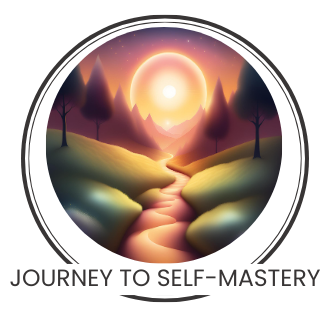
Emotional intelligence isn’t just a buzzword—it’s the ability to understand, manage, and leverage your emotions effectively. Want to know where you stand? This quick quiz will help you uncover your EQ strengths and blind spots—so you can improve your decision-making, relationships, and self-mastery.
EQ kicked off in the world of psychology back in the 1990s. It’s gained traction because it’s like the secret sauce that makes relationships work, the linchpin for handling tension, and even gives your career a boost.
EQ isn’t just a single skill. It breaks down into several key parts like self-awareness, which is basically being your own best critic. Then there’s empathy, or getting what others are going through. Mastering these skills can seriously change how you interact with the world.
Understanding these components helps in knitting your emotional fabric tighter. Think about self-regulation, which is all about keeping your emotions in check, or using them in a handy way. There’s also social skills – wrapping up this bundle of EQ insights to turn you into a people person.
Knowing the basics of EQ and its underlying components puts you on the right path to wielding emotions like a pro. So, get ready to explore more as we peel back each layer of emotional intelligence throughout this guide.
The Core of EQ: The Five C’s You Need to Know
Alright, there’s a catchy way to remember the backbone of emotional intelligence – it’s called the Five C’s: Communication, Curiosity, Commitment, Control, and Collaboration. Each one plays a unique role in shaping how we connect with ourselves and the folks around us.
Communication is where it all starts. It’s not just about talking; it’s about listening and picking up on those non-verbal cues. Think of it as the channel that keeps misunderstandings at bay. Being clear and effective in exchanging ideas can transform your interactions.
Next up is Curiosity. Keeping an open mind to learn about yourself and what makes others tick requires a deep dive into listening and observing. It helps you understand different perspectives and actions, providing depth to your interactions and decisions.
Commitment is all about dedication and staying true to your goals and values. It means being accountable, trustworthy, and consistent, which can build strong relationships and a supportive environment. It’s the glue that holds everything together despite setbacks.
Control is the art of self-regulation. Knowing when to keep emotions in check or express them in balance can be the difference between drama and calmness. It’s about steering your emotional ship through stormy and smooth times alike.
Lastly, there’s Collaboration. Teaming up effectively demands seeing eye-to-eye with others and working towards a common goal. It’s about fostering a give-and-take dynamic where every team member’s input is valued.
Enhancing the Five C’s can make a fantastic improvement in your everyday life. Whether you’re dealing with a personal dilemma or a group project at work, having these in your toolkit will give you an edge. Focus on practicing them one at a time to notice how your EQ naturally evolves.
How to Measure Your Emotional Intelligence
When it comes to measuring emotional intelligence, think of it as a personal growth checkpoint. Various tools and quizzes are out there, designed to give you a snapshot of your EQ. Some are straightforward like online quizzes, whereas others are more in-depth, involving self-assessment reports and peer feedback.
Online quizzes are quick, accessible, and can give a rough estimate of where you stand. They’re like fun questionnaires asking about your reactions and feelings in different scenarios. While they give a nice overview, remember they can’t dive too deep into complex emotions.
Then there are structured tests developed by psychologists, like the Emotional and Social Competency Inventory (ESCI) or the Mayer-Salovey-Caruso Emotional Intelligence Test (MSCEIT). These assessments are detailed, focusing on measuring specific elements, like how well you perceive emotions and manage them.
Another way is qualitative self-evaluations, where you reflect on past experiences and your responses to emotional situations. This method requires honesty with yourself, taking the time to ponder how well you understood and managed feelings in the past.
Each method has its perks and limits. Online tests provide quick feedback but can lack depth. Robust assessments give detailed insights but take time and might cost a bit. Consider combining different methods for a well-rounded understanding of your EQ level. After all, knowing your baseline can guide personal development in emotionally savvy ways.
Self-Evaluation: How to Recognize Your EQ Level
Wondering how emotionally intelligent you are? Well, there are certain signs and signals that give away your EQ level. It’s about observing both your reactions and your interactions with others.
High emotional intelligence often shows up as self-awareness. This means knowing your strengths, weaknesses, and the way you naturally react to stress or happiness. If you’re pretty tuned into your emotions and can express them appropriately, that’s a good indicator.
Empathy is another telltale sign. Are you the go-to person for advice? Do you find it easy to step into someone else’s shoes and understand their feelings? That knack for empathy is a clear sign of high EQ.
Handling conflict effectively is crucial too. If you can resolve disputes without drama and find win-win solutions, you might just have a good grip on emotional intelligence.
Self-regulation also plays a part. If you can manage your outbursts and aren’t quick to the trigger emotionally, you’re showing one of the key markers of EQ. Staying calm under pressure shows control over one’s emotions.
On the flip side, if you often find yourself struggling with relationships, feeling misunderstood, or overwhelmed by emotions, these might be areas to work on. It’s about knowing what needs tweaking and what you’re naturally good at.
To get a clearer picture of your EQ level, try out personal reflection exercises. Think about past interactions where emotions played a role. What went well? What could’ve been better? These insights can help identify both strengths and areas for growth in your own emotional intelligence.
Unleashing Your Emotional Potential: Next Steps
So, you’ve got a handle on your EQ and maybe spotted a few areas for improvement. What’s next? Improving your emotional intelligence is a journey, and there are plenty of ways to level up your skills.
Start by practicing mindfulness. Spend a few minutes each day tuning into your feelings without judgment. This helps build self-awareness and might just calm your mind down in the process.
Communication exercises are another great way to boost EQ. Try active listening, where you focus entirely on the person speaking. Ask clarifying questions and mirror their emotions with empathy. Practicing this can make you a better communicator over time.
Dive into resources that offer insights into EQ. Books like ‘Emotional Intelligence’ by Daniel Goleman or ‘The EQ Edge’ by Steven J. Stein provide comprehensive takes on exploring emotional landscapes.
Consider joining workshops or courses. There are many online options that offer structured learning paths to advance your EQ. From webinars to interactive sessions, they can equip you with actionable skills and meet others on the same journey.
Don’t forget about feedback! Reach out to trusted friends or colleagues and get their perspective on your strengths and what could use work. Outside opinions offer invaluable insights when fine-tuning emotional skills.
Remember, enhancing EQ isn’t just about learning new skills – it’s about embedding them in your daily life. Whether you’re at home, at work, or out with friends, consistently practice the Five C’s and watch how your EQ evolves.
